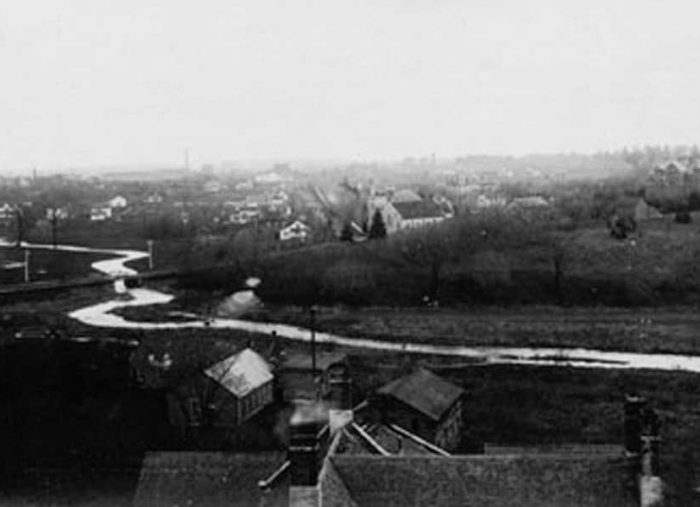Wilbur Lake (sometimes spelled Wilber Lake) was a small, man-made pond in the heart of Georgetown, Ontario, formed along Silver Creek in the early 19th century. Though it disappeared in 1915, the lake played a pivotal role in Georgetown’s industrial beginnings and later became a beloved recreation spot for residents.
What follows is a chronological look at its history, drawn from local records and community recollections.
History of Wilbur Lake.
Early Settlement and Industrial Beginnings (1820s–1830s)
1823: George Kennedy’s Arrival and the First Mill
When early settler George Kennedy arrived in the area in 1823, he recognized the potential of Silver Creek’s steady current.
Harnessing its power, he constructed a sawmill by damming the creek, forming the pond that would later be known as Wilbur Lake.
This modest mill became the nucleus of a growing settlement and marked the beginning of Georgetown’s industrial era, using hydropower to process lumber from surrounding forests.
1837: Naming Georgetown and Wilbur Lake
In 1837, Irish brothers James and William Barber purchased Kennedy’s mills and the surrounding land. The community that had developed around the site was renamed Georgetown in honour of its founder, George Kennedy. The pond, meanwhile, became known as Wilbur Lake—a name believed to combine “Wil” from nearby Glen Williams and “bur” from the Barber family’s surname.
Locals affectionately nicknamed it “Lake Sometime” because its water levels fluctuated with the seasons, revealing the playful character of a waterway that was sometimes full and sometimes nearly dry.
Growth and Community Role (1840s–1914)
Industrial Expansion
By the mid-19th century, the Barber brothers had transformed Georgetown into a thriving industrial village. They expanded operations along Silver Creek, establishing grist mills, woolen mills, and factories that relied on the power generated by a network of mill ponds—including Wilbur Lake.
Situated near the modern intersection of Guelph Street and Mill Street (today’s Wilber Lake Park), the lake was one of four major ponds in early Georgetown, alongside Lawson’s Trout Pond. These impoundments powered the town’s industries—such as textile production and grain processing—and supported a rich ecosystem teeming with fish, birds, and other wildlife.
Wilbur Lake. A Recreational heaven
As the town prospered, Wilbur Lake evolved into a cherished gathering place. Residents picnicked along its shores, canoed in summer, and skated across its frozen surface in winter. It became a popular setting for family outings, community celebrations, and even early “staycations” long before the term existed.
Historic photographs from around 1908–1912 capture families enjoying the tranquil waters, with the Georgetown Coated Paper Mill and church steeples rising in the background.
Local historian Charles Young, son of an early pioneer, later reminisced about the lake’s ecological vitality and role in shaping old Georgetown’s spirit.

Decline and Draining (1915)
The Arrival of the Toronto Suburban Railway
The end of Wilbur Lake came in 1915, when it was drained to make way for a wooden trestle supporting the Guelph Radial Line. Part of the Toronto Suburban Railway network. The interurban rail project prioritized transportation infrastructure over local heritage, and with its construction, Wilbur Lake vanished from the landscape.
Its disappearance marked the close of an era. Silver Creek, once a robust waterway that powered Georgetown’s early industries, gradually diminished under the pressures of urbanization.
Today, much of the creek flows unseen beneath streets and buildings, while the former site of Wilbur Lake remains a quiet grassy park, offering little hint of the vital role this modest pond once played in Georgetown’s story.



